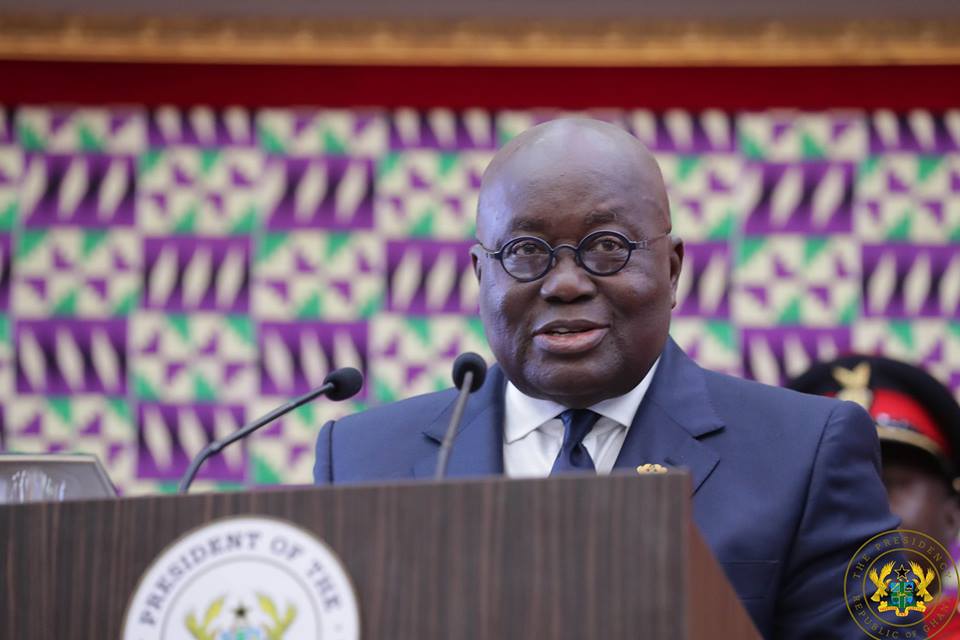President Nana Addo Dankwa Akufo-Addo on Thursday, February 20, 2020, delivered his fourth State of the Nation Address (SONA) where he made certain claims about inflation, economic growth, foreign direct investment and unemployment. The Media Foundation for West Africa’s (MFWA’s) fact-checking team has examined four of the claims. Below are the specific claims he made, the fact-checking verdicts and the bases for the verdicts.
Claim 1: Our economic growth has rebounded to place Ghana among the fastest growing economies in the world for three years in a row at an annual average of 7%, up from 3.4% in 2016, the lowest in nearly three decades.
Verdict: Half True
Explanation: The claim is in two parts. The first part of the claim, that Ghana’s economy recorded an average growth of 7% in the last three years is true. According to data from the World Bank, Ghana recorded a GDP growth rate of 8.14% in 2017 and 6.26% in 2018. The World Bank also projected Ghana’s GDP growth rate in 2019 at 7.6% The average of the GDP growth rate for the past three years is therefore 7.3%.
However, the second part of the claim, that the 3.4% growth rate in 2016 is the lowest recorded in nearly three decades in false. According to data from the World Bank, in 1994 Ghana recorded a growth rate of 3.3%. In 2014, the economy recorded growth rate of 2.89%. The GDP growth rate furthered dipped in 2015 to 2.17%.
Claim 2: The international investor community has recognised this development, resulting in Ghana, today, being the largest recipient of foreign direct investment in West Africa.
Verdict: True
Explanation: A report released in 2019 by the United Nations Conference on Trade and Development (UNCTAD) titled “UNCTAD Global Investment Trends Monitor” revealed that Ghana has overtaken Nigeria as the largest recipient of the foreign direct investment (FDI). It followed a 36% decline of FDI in Nigeria.
Claim 3: Mr. Speaker, in three years we have reduced inflation to its lowest level (7.8% in January 2020) since 1992.
Verdict: Completely False
Explanation: Inflation rate also known as Consumer Price Index (CPI) measures changes in general price level of goods and services in an economy over a period of time. It is computed by measuring the price level of a weighted average market basket of consumer goods and services purchased by households.
The Ghana Statistical Service (GSS), measures the inflation rate by basing it on specific years, the recent base year being 2018. Over the years, the GSS has rebased or changed the base years of the CPI for a number of times making the recent inflation rates not comparable to other years.
Therefore, the 7.8% inflation rate is not comparable with the rates of the previous years, particularly before 2018.
Even if the claim were to be true, for the purposes of comparison, Ghana’s economy, under the Provisional National Defence Council (PNDC), recorded 7.7% inflation rate in February 1992 and 7.3% in March in the same year, both the lowest since 1992.
Claim 4: The Ghana Living Standards Survey tells us that unemployment has fallen from 11.9% in 2015 to 7.3% in 2019
Verdict: Completely false
Explanation: The Ghana Living Standards Survey (GLSS) explains that “a person is considered as unemployed if he/she was not engaged in any work or had no attachment to a job or business and was “potentially” available for jobs.” The current Ghana Living Standards Survey (GLSS 7) released in June 2019 indicated that unemployment rate (15 years and older) is 8.4% and 12.6% for youth unemployment (15-35 years). The previous survey (GLSS 6) which was released in August 2014, and not 2015 as presented by the President, indicated the unemployment rate (15 years and older) is 5.2% and 10.9% for youth unemployment (15-25 years). This indicates unemployment rate is rather rising.



